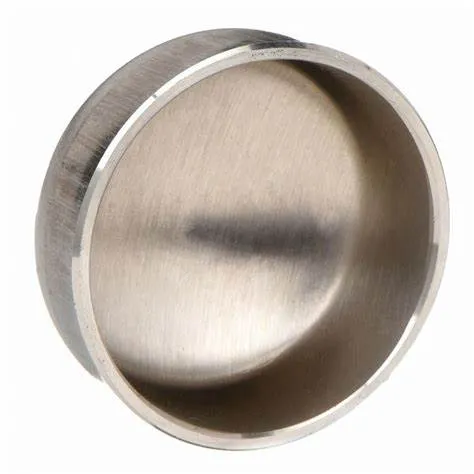-
Cangzhou Yulong Steel Co., Ltd.
-
Phone:
+86 13303177267 -
Email:
admin@ylsteelfittings.com
- English
- Arabic
- Italian
- Spanish
- Portuguese
- German
- kazakh
- Persian
- Greek
- French
- Russian
- Polish
- Thai
- Indonesian
- Vietnamese
- Zulu
- Korean
- Uzbek
- Hindi
- Serbian
- Malay
- Ukrainian
- Gujarati
- Haitian Creole
- hausa
- hawaiian
- Hebrew
- Miao
- Hungarian
- Icelandic
- igbo
- irish
- Japanese
- Javanese
- Kannada
- Khmer
- Rwandese
- Afrikaans
- Albanian
- Amharic
- Armenian
- Azerbaijani
- Basque
- Belarusian
- Bengali
- Bosnian
- Bulgarian
- Catalan
- Cebuano
- China
- China (Taiwan)
- Corsican
- Croatian
- Czech
- Danish
- Esperanto
- Estonian
- Finnish
- Frisian
- Galician
- Georgian
- Kurdish
- Kyrgyz
- Lao
- Latin
- Latvian
- Lithuanian
- Luxembourgish
- Macedonian
- Malgashi
- Malayalam
- Maltese
- Maori
- Marathi
- Mongolian
- Myanmar
- Nepali
- Norwegian
- Norwegian
- Occitan
- Pashto
- Dutch
- Punjabi
- Romanian
- Samoan
- Scottish Gaelic
- Sesotho
- Shona
- Sindhi
- Sinhala
- Slovak
- Slovenian
- Somali
- Sundanese
- Swahili
- Swedish
- Tagalog
- Tajik
- Tamil
- Tatar
- Telugu
- Turkish
- Turkmen
- Urdu
- Uighur
- Welsh
- Bantu
- Yiddish
- Yoruba

Aug . 12, 2024 12:36 Back to list
Choosing the Right Booster Pump for Your Reverse Osmosis Water Purifier System
Understanding the Role of Booster Pumps in RO Water Purifiers
Reverse Osmosis (RO) water purifiers are widely recognized for their ability to produce clean and safe drinking water by removing impurities and contaminants. However, to ensure that these systems operate efficiently, one crucial component that is often utilized is the booster pump. This article delves into the importance of booster pumps in RO water purifiers, their functions, benefits, and considerations when integrating them into a water purification system.
What is a Booster Pump?
A booster pump is a device designed to increase the pressure of water entering the RO system. In an RO water purifier, water needs to be subjected to high pressure for it to pass through the semi-permeable membrane effectively. This pressure is vital as it helps in overcoming the osmotic pressure that naturally resists the flow of water through the membrane. In scenarios where the incoming water pressure is low—such as in areas with poor municipal water supply—a booster pump becomes indispensable.
How Does a Booster Pump Work?
The function of a booster pump is quite straightforward. It takes the incoming water, which may have low pressure, and elevates it to the necessary levels before it enters the RO membrane. Typically, the required pressure for optimal RO operation is around 50 to 80 psi (pounds per square inch). By using a booster pump, the water pressure can be increased to meet or exceed this requirement, ensuring that the RO system operates efficiently.
Benefits of Using a Booster Pump
1. Improved Efficiency The primary advantage of integrating a booster pump in an RO water purifier is the enhanced efficiency of the purification process. With optimal pressure, the RO system can produce more purified water in a shorter amount of time. This is particularly beneficial for households or businesses that require a higher volume of purified water.
2. Increased Water Yield Low water pressure can lead to lower production rates of purified water. A booster pump helps in maximizing the water yield from the RO system by ensuring that the membrane can function at its best capacity.
3. Enhanced Water Quality Higher pressure can also improve the quality of filtered water. It allows the RO membrane to remove a larger percentage of dissolved solids and contaminants, resulting in cleaner and healthier drinking water.
booster pump for ro water purifier

4. Energy Efficiency While it may seem counterintuitive, adding a booster pump can lead to better energy efficiency. By optimizing the pressure, the pump can help reduce the energy cost associated with running the RO system, particularly in areas with fluctuating water pressures.
Considerations When Choosing a Booster Pump
When selecting a booster pump for an RO water purifier, several factors should be considered.
1. Flow Rate It's essential to choose a pump that matches the flow rate required for your specific RO system. Pumps are available in varying capacities, so understanding your needs is crucial.
2. Pressure Rating Ensure that the pumping capacity aligns with the pressure requirements of your RO system. Too much pressure can damage the system, while too little can impede performance.
3. Energy Consumption Look for energy-efficient models that can provide the necessary pressure without consuming excessive power.
4. Installation and Maintenance Proper installation by a professional can ensure that the booster pump functions efficiently. Regular maintenance is also vital to prevent breakdowns and ensure longevity.
Conclusion
Incorporating a booster pump into an RO water purifier system can significantly enhance its performance, reliability, and efficiency. By ensuring that water pressure is adequate, these pumps play a critical role in producing high-quality purified water. For anyone looking to improve their water purification setup, understanding and investing in the right booster pump is a crucial step towards achieving optimal results.
Latest news
-
ANSI 150P SS304 SO FLANGE
NewsFeb.14,2025
-
ASTM A333GR6 STEEL PIPE
NewsJan.20,2025
-
ANSI B16.5 WELDING NECK FLANGE
NewsJan.15,2026
-
ANSI B16.5 SLIP-ON FLANGE
NewsApr.19,2024
-
SABS 1123 FLANGE
NewsJan.15,2025
-
DIN86044 PLATE FLANGE
NewsApr.19,2024
-
DIN2527 BLIND FLANGE
NewsApr.12,2024
-
JIS B2311 Butt-Welding Fittings LR/SR 45°/90° /180°Seamless/Weld
NewsApr.23,2024











